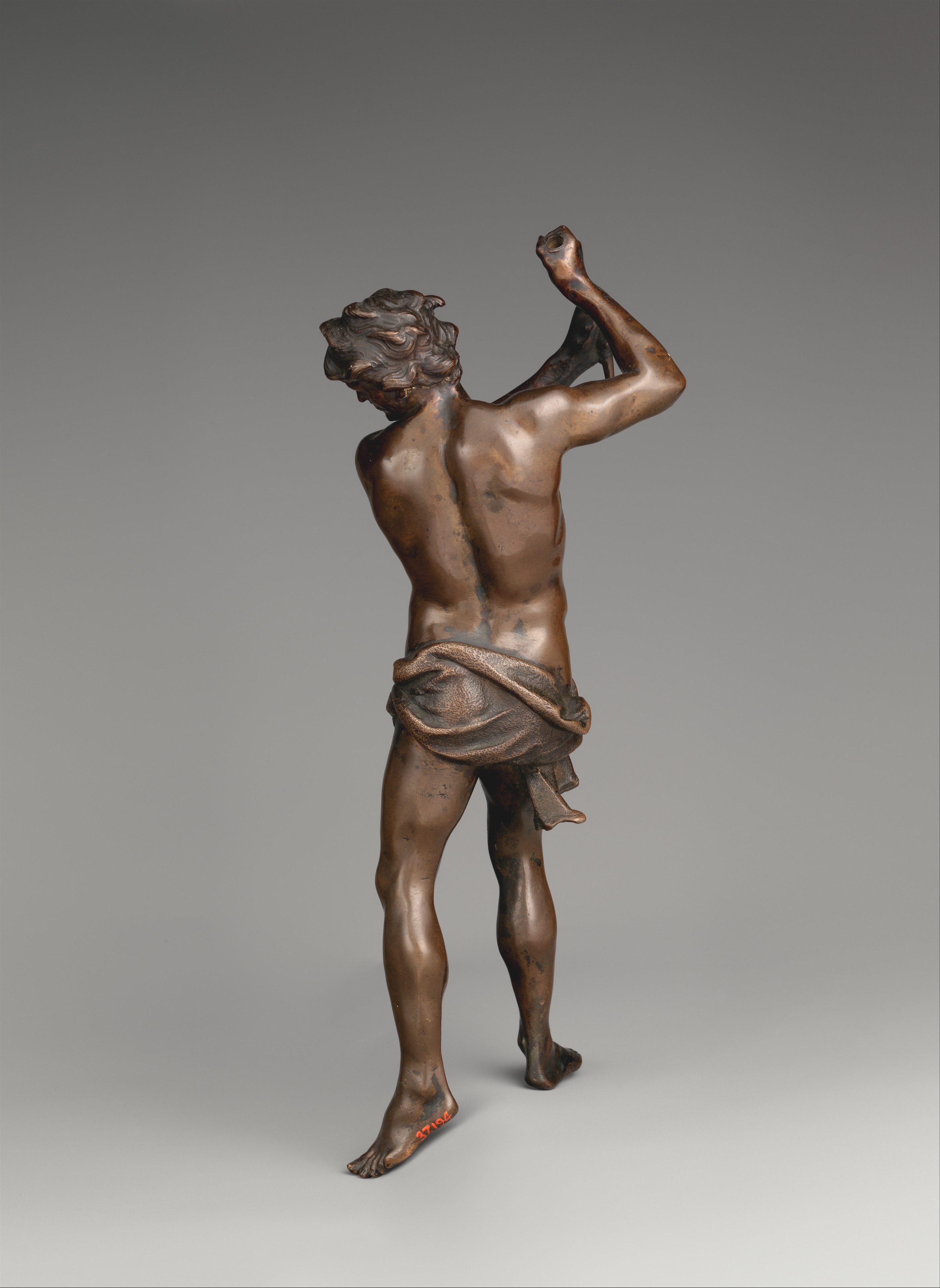Flagellator
After a model by Alessandro Algardi Italian
Not on view
Groups representing the Flagellation of Christ, of which this figure was once a part, were among the most popular and widely produced of small-scale bronzes in seventeenth-century Rome. Surviving examples consistently show Christ tied to a column at center scourged by two flanking figures. Jennifer Montagu proposed a division of these groups into two stylistic types based on the figures of the flagellators, Type A passive versus Type B dynamic. Type A, which she assigned to François Duquesnoy, is represented by a gilt-bronze group in Brussels and linked to a work mentioned in Giovanni Bellori’s biography of the artist.1 Montagu attributed Type B groups, such as gilt-bronze examples in the Fitzwilliam and the Kunsthistorisches Museum, to Alessandro Algardi.[2] The earliest documentation of Algardi’s authorship is in the 1758 inventory of the Schatzkammer (the Vienna group).[3]
Our flagellator, missing the knotted ropes of his whip, is a cast of the figure at Christ’s right from a Type B group. The sense of movement and undercurrent of violence find counterparts in Algardi’s oeuvre, for instance, the dramatic Beheading of Saint Paul marble group in San Paolo Maggiore, Bologna. The twisting flagellator’s weight is balanced on his right foot, his arms raised across his chest, brandishing the flail. The poor-quality cast is unlikely a product of Algardi’s workshop. The modeling is quite rubbery, and the pose lacks the sense of inherent tension or torsion from the torso’s twisting. The finishing of the facial features, toes, and feet is rudimentary, as is the rendering of the anatomy where the two legs join under the stippled loincloth. The brown transparent patina may be original. The legs and arms were cast solid. Two cracks on the left arm were likely caused by the placement of two screw plugs in that area.[4]
-JF
Footnotes
(For key to shortened references see bibliography in Allen, Italian Renaissance and Baroque Bronzes in The Metropolitan Museum of Art. NY: The Metropolitan Museum of Art, 2022.)
1. Bellori 1976 (1672), pp. 301–2. “E per ultimo parmi di non tralasciare tre figurine di suo modello, alte un palmo, le quali si veggono d’argento e di metallo; Cristo flagellato alla Colonna fra due ebrei che lo battono crudelmente esprime l’innocenza e la volontaria passione, esponendosi alle percosse e piegando il volto umile e dimmesso verso la destra spalla.” For the Brussels group, see Montagu 1985, vol. 2, p. 319, no. 9.C.21.
2. For the list of Type A and Type B figures, with further variants, see Montagu 1966–67, pp. 163–67. Grabski 1987 instead proposed that all the groups are variations on types by Algardi. For the Fitzwilliam group, see Montagu 1985, vol. 2, pp. 316–17, no. 9.C.2. For the Vienna group, see ibid., p. 317, no. 9.C.7; see also Pietro Cannata in Montagu 1999a, pp. 128–31, cat. 16.
3. Montagu 1985, vol. 2, p. 317, no. 9.C.7.
4. R. Stone/TR, January 27, 2011.
Due to rights restrictions, this image cannot be enlarged, viewed at full screen, or downloaded.
This artwork is meant to be viewed from right to left. Scroll left to view more.



